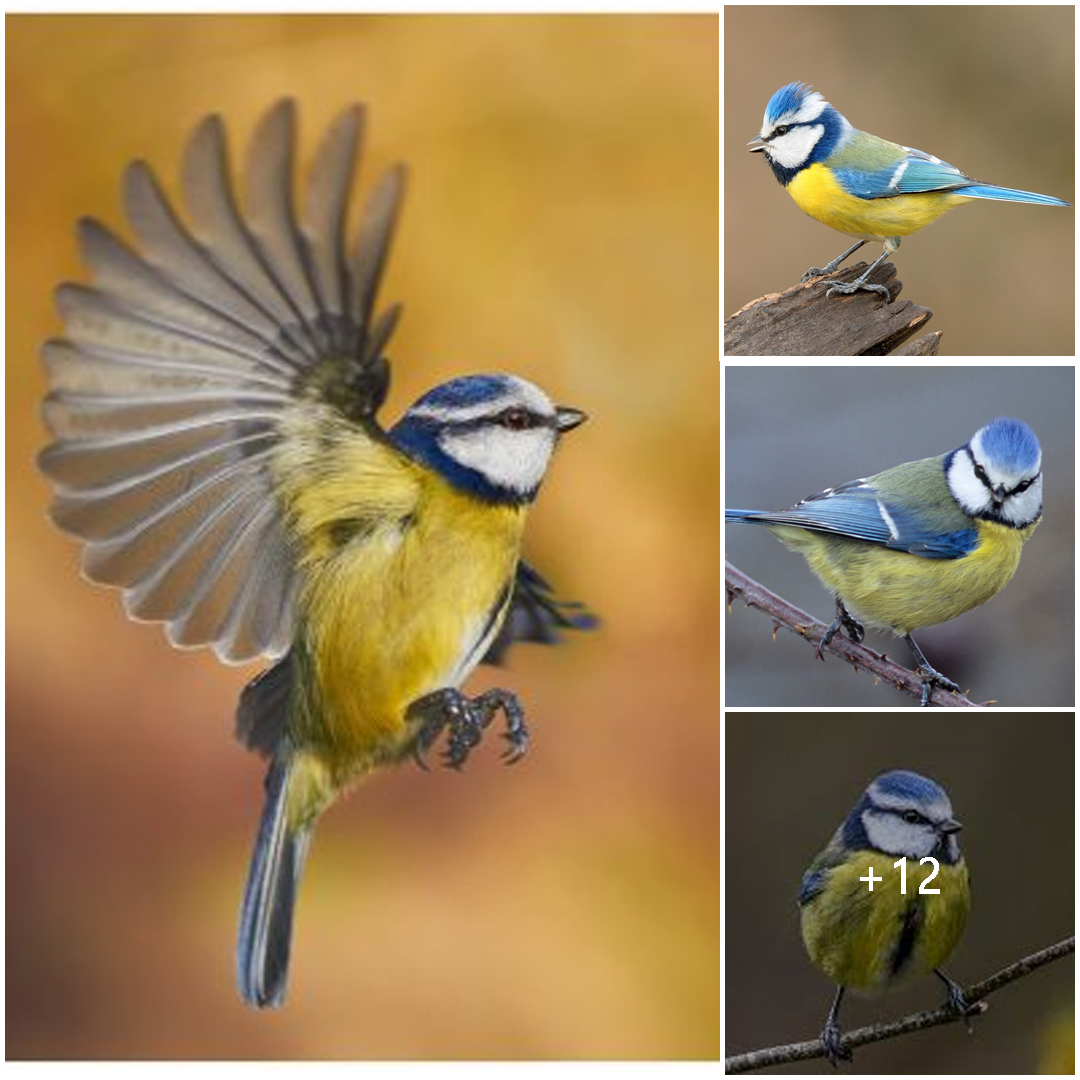
“The Vibrant Blue Tit: A Delightful Songbird of the Garden”
The Blue Tit, or Cyanistes caeruleus, is a charming and colorful songbird that graces gardens and woodlands across Europe and parts of Asia. With its striking blue, yellow, and white plumage, the Blue Tit is a favorite among birdwatchers and nature enthusiasts alike. Let’s explore the fascinating characteristics and behaviors of this delightful avian species.
Appearance and Plumage: One of the most distinctive features of the Blue Tit is its vibrant plumage. Its crown, wings, and tail are adorned with shades of blue, while its cheeks, throat, and belly are a bright yellow. A striking black stripe runs down its middle, dividing the yellow and blue regions. Additionally, the Blue Tit boasts white underparts, giving it a beautifully contrasting appearance. These vivid colors make the Blue Tit easily recognizable, even from a distance.
Habitat and Distribution: Blue Tits are versatile birds that can thrive in various habitats, including woodlands, parks, gardens, and urban areas. They are commonly found throughout Europe, from the British Isles to Scandinavia, as well as parts of Asia, including the Middle East and Siberia. Their adaptability to different environments has contributed to their widespread distribution and abundance.
Diet and Feeding Behavior: As omnivores, Blue Tits have a diverse diet that includes insects, spiders, seeds, berries, and nuts. They are agile foragers and are often seen hopping from branch to branch in search of food. Blue Tits are known for their acrobatic skills, clinging to tree trunks and branches while probing for insects hidden in bark crevices. They also visit bird feeders, where they enjoy sunflower seeds, peanuts, and suet.
Nesting and Breeding: During the breeding season, which typically begins in spring, Blue Tits seek out suitable nesting sites to raise their young. They often choose tree cavities, nest boxes, or holes in walls and fences. The female constructs the nest using moss, grass, feathers, and other soft materials, lining it with fur or feathers for insulation. Blue Tits are known to exhibit cavity-nesting behavior, excavating their own nest holes or utilizing existing ones abandoned by other birds.
Vocalizations: Blue Tits are highly vocal birds and have a wide repertoire of calls and songs. Their vocalizations include chirps, trills, and melodious warbles, which they use for communication within their social groups. During the breeding season, males often sing to attract mates and establish territory. Their songs are characterized by rapid and repetitive notes, creating a cheerful and musical atmosphere in woodlands and gardens.
Conservation Status: Overall, the Blue Tit population remains stable and is not currently considered threatened. However, habitat loss, pollution, and climate change pose potential risks to their long-term survival. Conservation efforts aimed at preserving and restoring natural habitats, as well as providing nesting opportunities and supplementary food sources, can help ensure the continued well-being of these charming songbirds.
In conclusion, the Blue Tit is a beloved and charismatic species that adds beauty and vitality to the natural world. With its striking appearance, acrobatic antics, and melodious songs, the Blue Tit captivates the hearts of birdwatchers and nature enthusiasts everywhere. Through conservation efforts and habitat preservation, we can safeguard the future of these delightful avian companions for generations to come.





